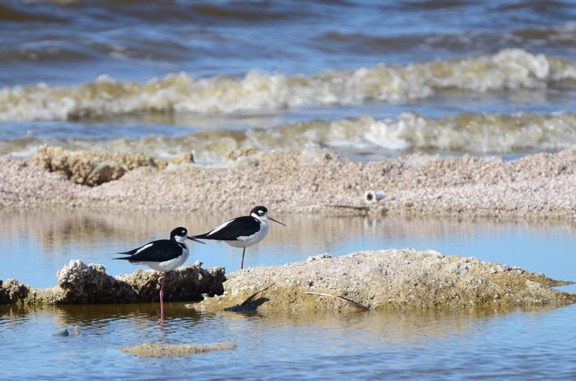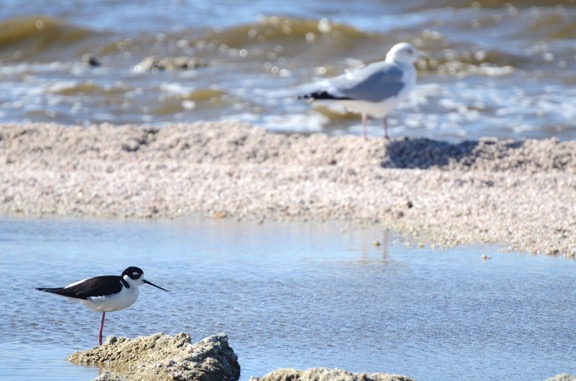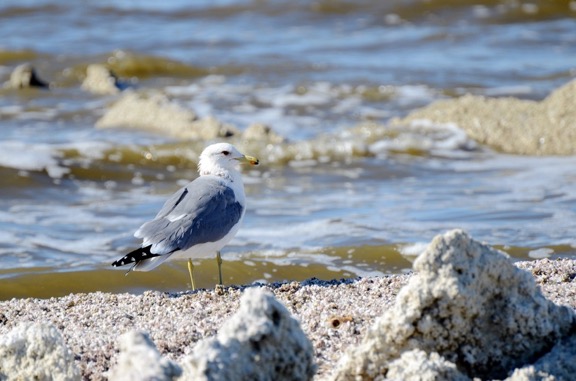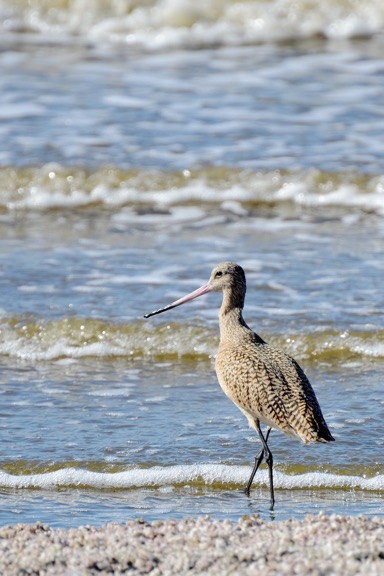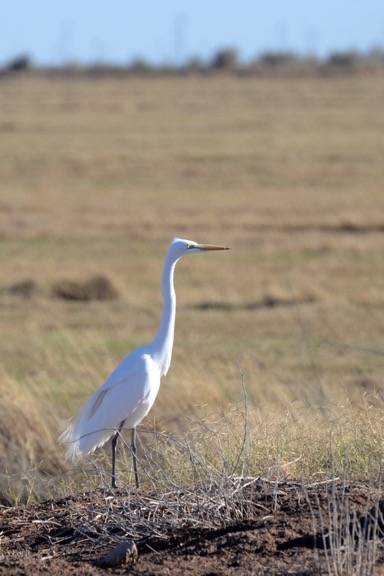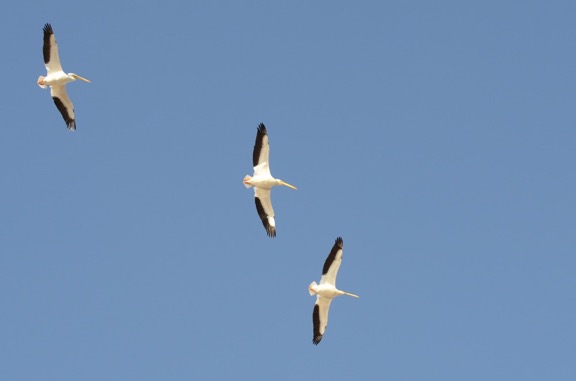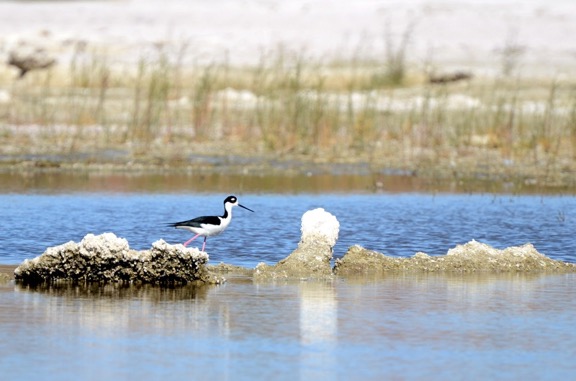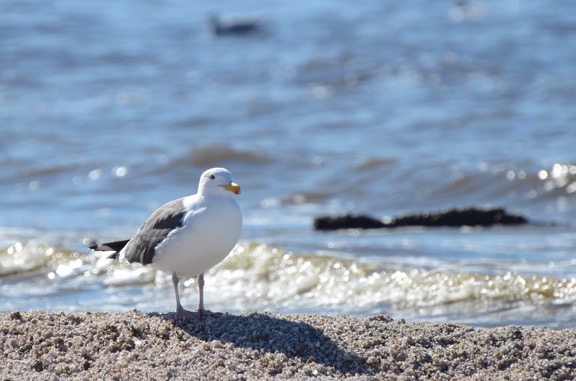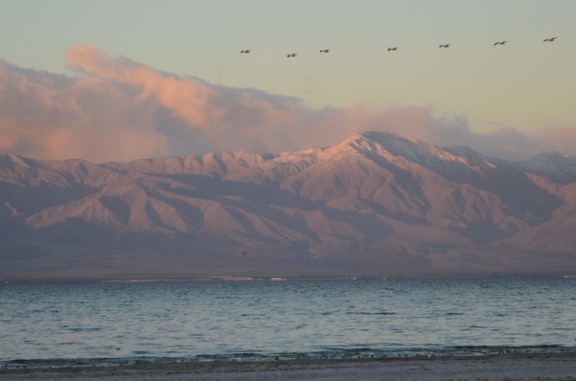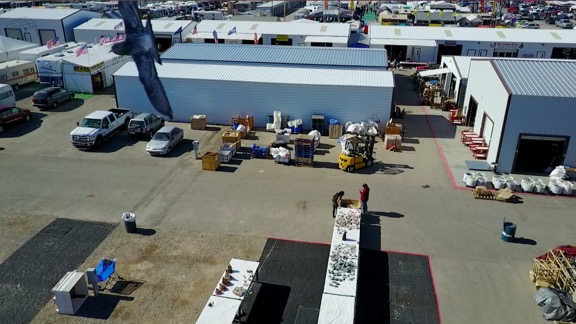Enjoying the kind of peace and quiet that an anchorage offers.
I’m just starting my second morning at anchor in a small channel between Florida Gulf Coast barrier islands. I’m not completely in the “middle of nowhere,” as I have been many times while camping with my truck camper — after all, I can see a handful of lights about a mile away at the end of the channel where there are a few homes and the sky in that direction has the glow you’d find over small cities. But where I’m parked at anchor it’s dark and quiet right now, with the only sound being the breeze in the flags and burgees hanging on my boat. Even the Gulf’s breaking waves, which I’ve been hearing during most of my time here, have quieted.
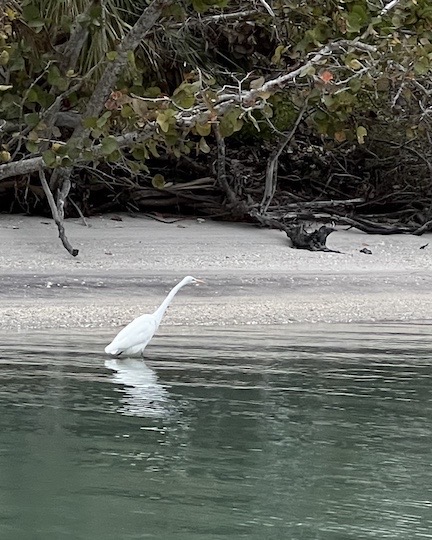
This fellow walked by my boat along the water’s edge yesterday. A friend followed about 3 minutes later.
Later, as the whole sky begins to brighten, I’ll see the wildlife around me: raccoons on the nearer island, wading birds like egrets walking the shallows, pelicans in flight, turkey vultures soaring. Yesterday I saw a bald eagle perched on one of the few tall trees nearby; when I arrived on Friday I saw the fins of dolphins swimming by.
The sun will be out today, warming the boat’s cabin and providing my solar panel with the fuel it needs to power my boat’s living systems without running a noisy generator. I’ll make bacon and eggs with veggies for breakfast, I’ll feed my pups and take them on a short dinghy ride to the beach to do their business, and then I’ll settle down to do more writing — I have so much to say about my journey so far! Later, we’ll make another, longer trip to the beach in the dinghy and spend some time gathering sea shells. I’ll grill up some salmon for dinner while listening to a podcast and spend the evening reading or planning the next few days of my trip.
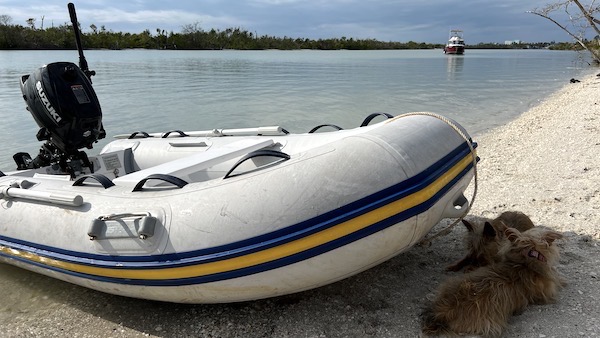
Yesterday, we took the dingy to a nearby beach. My girls are smart enough to sit in the shade when it’s sunny out.
Yes, I’ll see people come and go. While my boat is the only boat anchored here, it’s not the only one using this relatively shallow channel. I’ve seen pleasure boats zipping through, fisherman gliding by with silent electric motors, and even tour boats promising dolphin sightings puttering through while a man on a speaker points out things of interest around them. Yes, I’ve become a tourist attraction: the semi-retired solo traveler soaking up the serenity of Florida’s coastal waters.
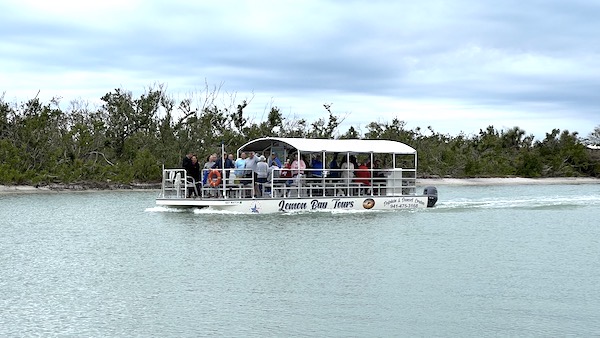
Yes, I’m a tourist attraction now.
And I’ll see people walking along the shore in the State Park on the Gulf side island. Their voices carry across the water; I can hear them talking but not what they’re saying.
But eventually, as the sun sinks lower and lower toward the horizon, all of these boats and people will fade away, going back to their docks and their homes and their lives. I’ll stay another day or two or maybe move on to the next anchorage, hoping it’s as pleasant as this one.
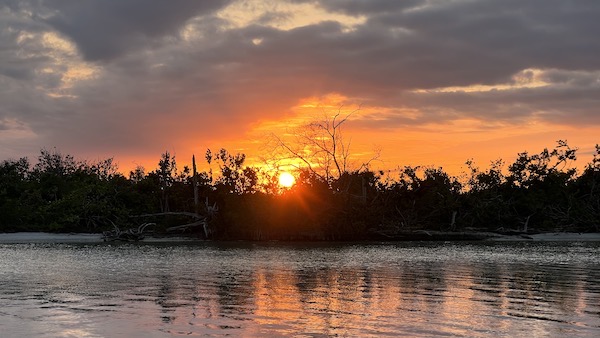
The sunsets aren’t too shabby from the boat, either.

 “Advice from a Raven” was different, though. Each of its seven points rang true with me:
“Advice from a Raven” was different, though. Each of its seven points rang true with me: